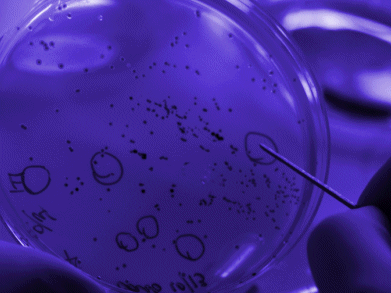Scientists around Walter Atwood, Brown University, USA, Thilo Stehle, University of Tuebingen, Germany, and Ten Feizi, Imperial College, London, have proved that the human JC polyomavirus (JCV) must bind the specific sugar molecule (LSTc) located at the side of the brain cells it attacks; binding with LSTc makes the difference between infection and health.
Using glycan array screening and viral infectivity assays, the researchers identified a linear sialylated pentasaccharide with the sequence NeuNAc-α2,6-Gal-β1,4-GlcNAc-β1,3-Gal-β1,4-Glc (LSTc) present on host glycoproteins and glycolipids as a specific JCV recognition motif.
If the virus is pre-mixed either with LSTc or with the very similar molecule LSTb and then exposed to glial cells, the virus pre-mixed with LSTc did not infect the cells, because they had already bound to LSTc in incubation. The virus that had been pre-exposed to LSTb, readily infected the glial cells.
Different mutations that made it more difficult for the virus to bind to LSTc reduced the likelihood of infection to different degrees.
The findings provide a powerful platform for the development of antiviral compounds.
- Structure-Function Analysis of the Human JC Polyomavirus Establishes the LSTc Pentasaccharide as a Functional Receptor Motif
Ursula Neu, Melissa S. Maginnis, Angelina S. Palma, Luisa J. Ströh, Christian D.S. Nelson, Ten Feizi, Walter J. Atwood, Thilo Stehle
Cell Host Microbe 2010, 8 (4), 309-319.
DOI: 10.1016/j.chom.2010.09.004




